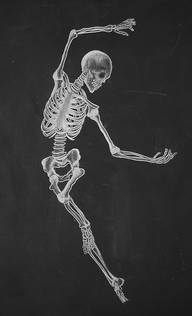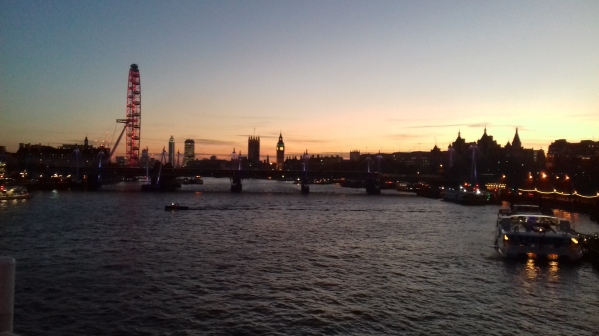
In situ image and schematic of Burial 519 (Fig. 3 page 73). Image taken from Wheeler et al. (2013) article.
Recently I have wanted to focus more on human pathologies in archaeology when I came across this article ‘Shattered lives and broken childhoods: Evidence of physical child abuse in ancient Egypt.’ I have never come across an example of this before and therefore gave it a read.
Child abuse is clinically classified as the maltreatment of a child by their parent or caretakers and can include physical, sexual and emotional abuse and physical and/or emotional neglect. In modern cases soft tissue damage and injuries are the most common presentation with 10 – 70% of children showing signs of skeletal trauma. In archaeology it is these latter injuries which may be seen however, it can be difficult to interpret them.
There are many reasons why confusion may occur when attempting to establish child abuse in skeletonised individuals. The first is establishing whether the trauma is a result of an accident or not. Traumas, such as fractures, may look the same no matter how they were obtained. However, the pattern of any pathologies identified, along with their process of healing, may be a good indicator. The use of physical discipline has also been recorded in the archaeology, for example during the Roman Period where it was not uncommon for children to be beaten if they made a mistake. There have been few examples of child abuse found during excavations, which may be a result of poor preservation and preparation, taphonomic processes or adult centred research and therefore does not mean that child abuse didn’t occur in past human societies, only that few cases have been confirmed.
This study by Williams et al. (2013) looks at an individual aged between 2 and 3 years old from the Romano-Christian Period from a cemetery in the Dakhleh Oasis, Egypt. In total 770 individuals were excavated, with a possible 4000 burials being present as indicated by an archaeological survey. From these 158 were 0 -1 years old, including the individual chosen for study. Burial 519 was undisturbed and had all of their teeth and bones, the preservation was also very good and therefore some hair, skin and nails survived. This individual was buried in the same manner as the other juveniles within the cemetery and it’s location did not distinguish it as being atypical. In order to study the individual full radiographs, micro-CT scans and tissue samples were taken, in addition to the standard ontological observations.
Burial 519 was aged using standard ageing methods by identifying the dental development and epiphyseal fusion of the individual. It was also observed that cribra orbitalia (an indication of a pathological deficiency) could be seen in both orbits. The authors noted that 60% of 1-3 year olds at the cemetery had this condition, with 95% of individuals having active lesions. The remaining pathologies recorded for the individual in Burial 519 related to fractures, a full summary of which can be found in Table 1, page 75 of the article.

Image showing fractures and bone growth in the humerus and ribs (Fig. 5 p. 76). Image taken from Wheeler et al. (2013) article.
These fractures were found in both upper arm bones, the clavicle, two ribs, two vertebrae and the pelvis. The healing process of these injuries differ and therefore suggests that they occurred at different times. For example, both humeri have complete transverse fractures of the proximal third where the bone margins are slightly rounded and the trabecular bone has a smooth appearance. This indicates that the breaks occurred several weeks before death whilst the fractures of the 7th left and 8th right ribs are well healed. In contrast to these breaks the right clavicle has a complete transverse fracture where there are no signs of healing. From looking at these sites alone it is fairly clear that all of the injuries did not occur at the same time.
This pattern of fractures and healing is consistent with clinical pattern of skeletal trauma in victims of non-accidental trauma; i.e. physical child abuse. This point is expanded on in the article with particular focus on the clavicle. The article states that accidental clavicle fractures are rare in children under the age of two (Carty 1997) and are usually a result of violent shaking of the arms by causing sudden traction. In older children these fractures can occur by falling. When combined with information about the ribs and humeri fractures the conclusion of child abuse can be justified in the individual of Burial 519. Fractures found in the humeri can be associated with direct blows of high energy and the bone formation at the diaphysis, mentioned in the article, indicates the limbs being pulled forcefully when being shaken which caused the periosteum to be stripped from the bone. Finally, the ribs are good indication that child abuse has occurs as fractures to these bones are very rare, even in violent trauma.

Image showing fracture in the clavicle and bone growth in the scapula and pelvis (Fig. 6 p. 77). Image taken from Wheeler et al. (2013) article.
It is not enough to use the fractures present to determine a case of child abuse, and the authors used isotopic analysis to investigate the child’s diet. It was found that there was a depletion in nitrogen and carbon, and it is suggested that this may have been caused by a reduced consumption of protein rich foods. In addition to this a comparison of Burial 519’s pathologies to other the juveniles to shed light on the causation. The overall trauma rate of the excavated individuals was 5.7% in individuals aged 0 -15 years. There was only one other juvenile who had multiple fractures and it was found that these all occurred in one single event (Wheeler 2009) and related to an accidental event; such as a fall or high-verlocity impact. This makes the skeleton in Burial 519 unique.
By taking a comparative and holistic approach the authors suggest that the majority of the fractures seen in Burial 519 are a result of non-accidental trauma and could be classified as child abuse. It is suggested that this behaviour is not usual for the society as few traumas were present in other juvenile skeletons. This skeleton may be the oldest case of non-accidental trauma in the archaeological record; although it is unlikely that it will be the oldest on. Other examples may have been looked over due to poor preservation or excavation.
Article Reference:
Wheeler, S. M., L. Williams, et al. (2013). “Shattered lives and broken childhoods: Evidence of physical child abuse in ancient Egypt.” International Journal of Paleopathology 3(2): 71-82.















